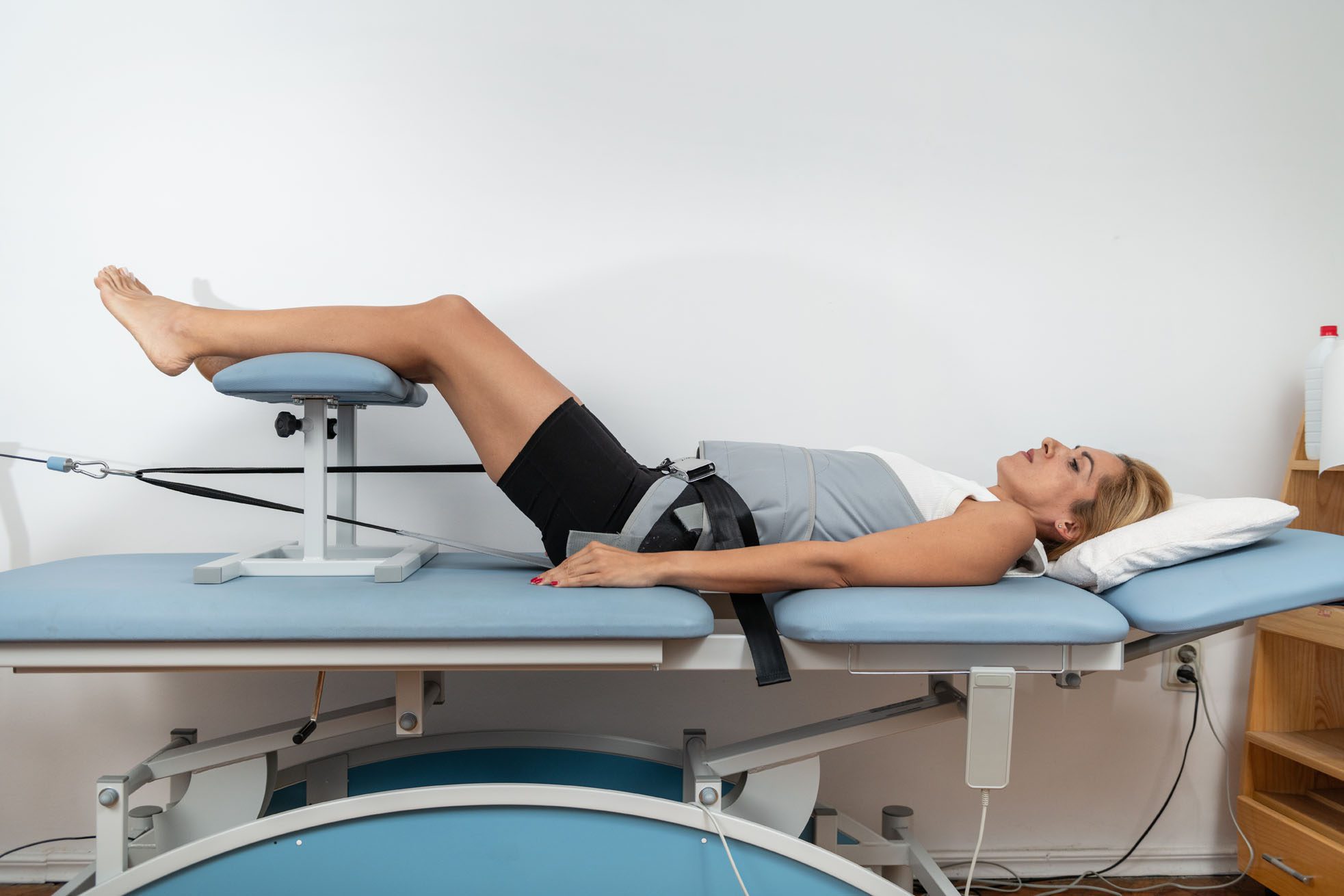Functional Medicine and Chiropractic Care: A Holistic Approach to Motor Vehicle Accident Recovery

Motor vehicle accidents (MVAs) can have profound physical and emotional consequences, often resulting in indirect trauma, back and neck pain, and even intestinal damage. These injuries, if left unaddressed, may lead to chronic musculoskeletal pain and systemic health issues. Functional medicine and chiropractic care, particularly through the expertise of professionals like Dr. Alexander Jimenez, DC, APRN, FNP-BC, offer a holistic and individualized approach to recovery. By targeting the root causes of injuries and promoting overall well-being, these modalities provide comprehensive healing strategies. This blog post examines the impact of MVAs, the role of functional medicine and chiropractic care in recovery, and Dr. Jimenez’s clinical approach in El Paso, Texas, which is supported by advanced diagnostics and evidence-based practices.
Understanding the Impact of Motor Vehicle Accidents
MVAs are a leading cause of injury worldwide, contributing to over 40% of spinal injuries annually. The trauma from these incidents can manifest as direct injuries, such as fractures or whiplash, and indirect issues, including chronic pain, emotional distress, and gastrointestinal disturbances. The complexity of MVA-related injuries necessitates a multidisciplinary approach to address both immediate symptoms and long-term health consequences.
Indirect Trauma from MVAs
Indirect trauma refers to injuries that are not immediately visible but develop over time due to biomechanical stress or systemic imbalances. For instance, the sudden jolt of a collision can misalign the spine, leading to subluxations that cause nerve irritation and muscle tension. These misalignments may not cause immediate pain but can contribute to chronic conditions like sciatica or fibromyalgia if left untreated.
Back and Neck Pain
Back and neck pain are among the most common complaints following MVAs, often resulting from whiplash or soft tissue injuries. Whiplash, caused by rapid acceleration and deceleration, irritates the muscles, tendons, and nerves in the cervical spine, leading to symptoms such as stiffness, headaches, and reduced range of motion. If untreated, these injuries can progress to chronic pain syndromes, affecting daily activities and quality of life.
Intestinal Damage and Gut Health
MVAs can also disrupt gut health, an often-overlooked consequence of trauma. The stress response triggered by an accident increases cortisol levels, which can alter gut microbiota and impair digestion. (Jimenez, 2025) Even without direct abdominal impact, the nervous system’s dysregulation can lead to conditions like irritable bowel syndrome (IBS) or leaky gut syndrome. Jimenez, 2025. Functional medicine addresses these issues by restoring gut integrity through a combination of nutrition and stress management.
Emotional and Psychological Impact
The emotional toll of MVAs, including post-traumatic stress disorder (PTSD) or anxiety, can exacerbate physical symptoms. Emotional distress may manifest as muscle tension or heightened pain perception, creating a feedback loop that hinders recovery. Visionary Law Group, n.d. Addressing both physical and emotional aspects is critical for holistic healing.
Citations:
- Jimenez, A. (2025). Motor vehicle accidents and gut health concerns. Personal Injury Doctor Group. https://personalinjurydoctorgroup.com/2025/06/16/motor-vehicle-accidents-and-gut-health-concerns/amp/
- Visionary Law Group. (n.d.). Comprehensive guide to auto accident trauma assessment. https://visionarylawgroup.com/comprehensive-guide-to-auto-accident-trauma-assessment/
The Role of Functional Medicine in MVA Recovery
Functional medicine takes a systems-based approach, focusing on identifying and addressing the root causes of health issues rather than merely treating symptoms (Premier Functional Medicine, n.d.). For MVA victims, this means personalized treatment plans that integrate nutrition, stress management, and targeted therapies to restore balance across the body’s systems.
Addressing Root Causes
Functional medicine practitioners use comprehensive assessments, including blood panels and functional movement screens, to identify underlying dysfunctions such as inflammation, hormonal imbalances, and nutritional deficiencies. A diet high in antioxidants and omega-3 fatty acids, for instance, can help reduce the chronic inflammation brought on by soft tissue injuries. Health Coach Clinic, n.d.
Nutritional Support for Healing
Nutrition plays a pivotal role in recovery, as healing is an energy-intensive process. Functional medicine emphasizes the consumption of nutrient-dense foods to support tissue repair and reduce fatigue. Key recommendations include:
- Protein: Essential for muscle and tissue repair, found in lean meats, fish, and legumes.
- Antioxidants, found in berries, leafy greens, and nuts, help combat oxidative stress caused by trauma.
- Probiotics: Support gut health and address MVA-related dysbiosis. Jimenez, 2025.
Stress Management and Nervous System Regulation
The autonomic nervous system, often dysregulated after MVAs, can perpetuate pain and digestive issues. Functional medicine utilizes techniques such as mindfulness, biofeedback, and adaptogenic herbs to rebalance the nervous system, thereby reducing cortisol levels and promoting relaxation. Pacific Natural Medicine, n.d.
Citations:
- Health Coach Clinic. (n.d.). Post-automobile accident nutrition for quick recovery. https://healthcoach.clinic/post-automobile-accident-nutrition-for-quick-recovery/
- Jimenez, A. (2025). Motor vehicle accidents and gut health concerns. Personal Injury Doctor Group. https://personalinjurydoctorgroup.com/2025/06/16/motor-vehicle-accidents-and-gut-health-concerns/amp/
- Pacific Natural Medicine. (n.d.). Naturopathic car accident treatment. https://www.pacificnaturalmedicine.com/post/naturopathic-car-accident-treatment
- Premier Functional Medicine. (n.d.). Toradol. https://www.premierfunctionalmedicine.com/services/toradol
Chiropractic Care: Restoring Musculoskeletal Function
Chiropractic care complements functional medicine by addressing biomechanical issues, particularly spinal misalignments and soft tissue injuries. Dr. Alexander Jimenez, a dual-licensed chiropractor and nurse practitioner in El Paso, Texas, is renowned for his expertise in treating MVA victims.
Spinal Adjustments
Chiropractic adjustments use quick, gentle thrusts to correct spinal misalignments, which helps alleviate nerve issues and enhance mobility. These adjustments are particularly effective for relieving neck and back pain, with studies showing that chiropractic care reduces the need for opioids and invasive procedures.
Soft Tissue Therapy
Manual therapies, such as massage and myofascial release, target muscle tension and scar tissue, promoting pain relief and improved range of motion. RX Wellness, n.d. These techniques are integral to Dr. Jimenez’s approach, ensuring comprehensive musculoskeletal recovery.
Functional Rehabilitation
Chiropractic care extends beyond adjustments to include functional rehabilitation programs. These programs incorporate strength training, flexibility exercises, and proprioceptive training to prevent re-injury and enhance performance.
Citations:
- RX Wellness. (n.d.). From pain to recovery: Natural car accident injury treatment options at RX Wellness. https://www.rxwellness.net/from-pain-to-recovery-natural-car-accident-injury-treatment-options-at-rxwellness/
Dr. Alexander Jimenez’s Clinical Approach in El Paso
Dr. Alexander Jimenez’s dual licensure as a chiropractor and nurse practitioner uniquely positions him to bridge medical diagnostics with holistic care. His clinic, Injury Medical & Chiropractic Center, is a leading destination for MVA recovery in El Paso, emphasizing advanced diagnostics and personalized treatment plans.
Advanced Imaging and Diagnostics
Dr. Jimenez utilizes advanced imaging techniques, including MRI and CT scans, to accurately diagnose soft tissue and spinal injuries. These tools correlate symptoms with objective findings, aiding in treatment planning and legal documentation for personal injury cases. Electromyography (EMG) and neurologic exams further assess nerve injuries, providing a comprehensive diagnostic picture. Jimenez, n.d.
Dual-Scope Procedures
As a nurse practitioner, Dr. Jimenez employs evidence-based medicine to address systemic issues, such as hormonal imbalances or metabolic dysfunctions, while his chiropractic expertise focuses on biomechanical corrections. This dual-scope approach ensures that both symptoms and root causes are addressed, thereby enhancing recovery outcomes.
Legal Documentation
In personal injury cases, Dr. Jimenez’s detailed assessments and imaging provide critical evidence for attorneys and insurance companies. His detailed questionnaires for auto accident injuries capture the mechanism of injury and biomechanics, ensuring accurate treatment and robust legal support.
Citations:
- Jimenez, A. (n.d.). Clinical observations. Dr. Alex Jimenez. https://dralexjimenez.com/
Holistic Recovery Strategies
Holistic recovery from MVAs involves integrating multiple modalities to address physical, emotional, and systemic health. Dr. Jimenez’s approach exemplifies this by combining chiropractic care, functional medicine, and collaborative care with specialists.
Collaborative Care
Dr. Jimenez collaborates with orthopedic surgeons, physical therapists, and nutritionists to provide seamless care. For severe injuries, such as fractures or dislocations, he coordinates with specialists to ensure proper healing and rehabilitation.
Long-Term Wellness
Functional medicine promotes long-term wellness by addressing lifestyle factors, such as diet, exercise, and stress management. Conditioning programs tailored for athletes or active individuals enhance mobility and help prevent reinjury.
Patient Education
Dr. Jimenez empowers patients through education, offering resources on spinal health, nutrition, and stress management via his website, www.dralexjimenez.com. Patient testimonials highlight the transformative impact of his care, particularly for chronic pain and sports injuries.
The Progression of Musculoskeletal Joint Pain
Untreated MVA injuries can lead to progressive musculoskeletal joint pain, including conditions like osteoarthritis or degenerative disc disease. Chronic inflammation and biomechanical stress exacerbate joint wear and tear, thereby reducing mobility and quality of life. Functional medicine and chiropractic care mitigate these risks by addressing inflammation and restoring joint function early in the recovery process.
Conclusion
Motor vehicle accidents can cause a cascade of physical and emotional challenges, from back and neck pain to gut health issues and chronic musculoskeletal conditions. Functional medicine and chiropractic care, as exemplified by Dr. Alexander Jimenez in El Paso, offer a holistic and effective approach to recovery. By integrating advanced diagnostics, personalized treatment plans, and collaborative care, these modalities address the root causes of injuries and promote long-term wellness. For MVA victims, seeking care from a dual-licensed practitioner like Dr. Jimenez ensures comprehensive healing and robust support for personal injury cases.
References
- Accident Care Chiropractic. (n.d.). Returning to work and activities after an auto accident. https://accidentcarechiropractic.com/returning-to-work-and-activities-after-an-auto-accident/
- Altitude Health. (n.d.). Comprehensive care: Integrating chiropractic, physiotherapy, naturopathy, and more for motor vehicle accident recovery. https://www.altitudehealth.ca/comprehensive-care-integrating-chiropractic-physiotherapy-naturopathy-and-more-for-motor-vehicle-accident-recovery/
- Balance Body Medicine. (n.d.). Chronic pain management in functional medicine. https://www.balancebodymed.com/post/chronic-pain-management-in-functional-medicine
- County Line Chiropractic. (n.d.). Natural holistic treatments of car accident injuries. https://www.countylinechiro.com/blog/natural-holistic-treatments-of-car-accident-injuries
- Health Coach Clinic. (n.d.). El Paso motor vehicle accident physical therapy insights. https://healthcoach.clinic/el-paso-motor-vehicle-accident-physical-therapy-insights/
- Health Coach Clinic. (n.d.). Post-automobile accident nutrition for quick recovery. https://healthcoach.clinic/post-automobile-accident-nutrition-for-quick-recovery/
- Heartspring Health. (n.d.). Collaborative natural medicine: Motor vehicle accidents. https://heartspringhealth.com/collaborative-natural-medicine-motor-vehicle-accidents/
- Heartspring Health. (n.d.). Naturopathic doctor: Natural car accident treatment. https://heartspringhealth.com/naturopathic-doctor-natural-car-accident-treatment/
- Jimenez, A. (n.d.). Clinical observations. ChiroMed. https://chiromed.com/
- Jimenez, A. (n.d.). Clinical observations. Dr. Alex Jimenez. https://dralexjimenez.com/
- Jimenez, A. (2025). Motor vehicle accidents and gut health concerns. Personal Injury Doctor Group. https://personalinjurydoctorgroup.com/2025/06/16/motor-vehicle-accidents-and-gut-health-concerns/amp/
- Jimenez, A. (2025). Motor vehicle accidents & gut health: Understanding the connection. LinkedIn. https://www.linkedin.com/pulse/motor-vehicle-accidents-gut-health-understanding-dr-alexander-8qtpc
- Pacific Natural Medicine. (n.d.). Naturopathic car accident treatment. https://www.pacificnaturalmedicine.com/post/naturopathic-car-accident-treatment
- Premier Functional Medicine. (n.d.). Toradol. https://www.premierfunctionalmedicine.com/services/toradol
- RX Wellness. (n.d.). From pain to recovery: Natural car accident injury treatment options at RX Wellness. https://www.rxwellness.net/from-pain-to-recovery-natural-car-accident-injury-treatment-options-at-rxwellness/
- Visionary Law Group. (n.d.). Comprehensive guide to auto accident trauma assessment. https://visionarylawgroup.com/comprehensive-guide-to-auto-accident-trauma-assessment/








